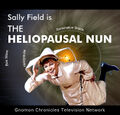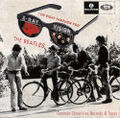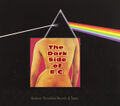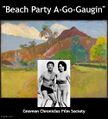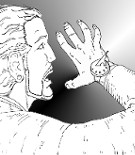March 30
Better Than News
Kon-Tiki: Across Walden Pond is a book by Henry David Thoreau and Thor Heyerdahl, reflecting upon the authors' simple traversal of natural surroundings.
Zen and the Art of Typewriter Maintenance is a self-discovery travel and body horror film written and directed by David Cronenberg, based on the nonfiction book of the same name by Robert Pirsig.
The Heliopausal Nun is an American sitcom about Sister Bertrille, an astrophysicist nun who can travel through outer space when the solar wind catches her cornette.
The Electric Kool-Aid Matrix Test is a 1968 nonfiction book by Tom Wolfe written in the Virtual Journalism literary style. The book presents a firsthand account of the experiences of Ken Kesey and a group of artificial intelligence researchers, known as the Neural Pranksters, who traveled across the United States in a self-driving school bus.
The Fisher King is a 1991 American fantasy comedy-drama film about a radio shock jock (Robin Williams) who tries to find redemption by living among the fishers— small, carnivorous mammals related to weasels, native to the boreal forests of Canada and the northern United States.
Beyond Plausible
"Day Tweeter" is a song by the English rock band the Tweetles.
"I See Right Through You" is a lost song by the British rock band the Beatles about X-ray specs.
The Dark Side of E.C. is a 1973 album by Pink Floyd and Eric Clapton.
In Other Words
Matrix: Cheese Wars is a science fiction foodie film starring Keanu Reeves, Carrie-Anne Moss, and Gordon Ramsay.
Marquis de Sade Whipped Jalapeño Cheddar spread is a brand of hand-whipped dairy bondage food products.
Are You Sure
• ... that mathematician Stefan Banach is the namesake of Banach spaces, Banach algebras, the Banach–Tarski paradox, the Hahn–Banach theorem, the Banach–Steinhaus theorem, the Banach-Mazur game, the Banach–Alaoglu theorem, and the Banach fixed-point theorem?
• ... that physicist Charles Vernon Boys achieved recognition as a scientist for his invention of the fused quartz fiber torsion balance, which allowed him to measure extremely small forces, and that Boys made the fused quartz fibers for his instrument by attaching a quartz rod to a crossbow quarrel, heating the rod to the point of melting, and firing the crossbow, and that by this means he produced fiber so thin that it could not be resolved with an optical microscope?
• ... that mathematician Harold Scott "Donald" Coxeter composed music in his youth and was an accomplished pianist at the age of 10, and that Coxeter felt that mathematics and music were intimately related, outlining his ideas in a 1962 article on "Mathematics and Music" in the Canadian Music Journal?
• ... that mathematician Adam Ries wrote several books on practical mathematics, including Rechnung auff der linihen ("Reckoning on the Line", 1518), which describes calculation on a calculating board, a kind of abacus, and that according to the foreword the second edition was expressly intended for children?
Selected Anniversaries
1599: Mathematician Adam Ries dies. Reis wrote textbooks for practical mathematics, promoting the advantages of Arabic/Indian numerals over Roman numerals.
1606: Mathematician and astronomer Vincentio Reinieri born. Reinieri revised and finished the work of Galileo, who before his death placed all of the papers containing his observations and calculations in Reinieri's hands.
1811: Chemist and academic Robert Bunsen born. Bunsen will investigate emission spectra of heated elements, and discover caesium (in 1860) and rubidium (in 1861) with the physicist Gustav Kirchhoff.
1886: Mathematician, philosopher, and logician Stanisław Leśniewski born. Leśniewski will posit three nested formal systems, to which he will give the Greek-derived names of protothetic, ontology, and mereology.
1892: Mathematician and academic Stefan Banach born. Banach will be one of the founders of modern functional analysis.
Topic of the Day
Art Films
Sweeney Vince is a 2007 American revisionist biography musical thriller film loosely based on the life of Vincent van Gogh.
Beach Party A-Go-Gaugin is a beach party art film starring Annette Funicello, Frankie Avalon, and Paul Gaugin.



